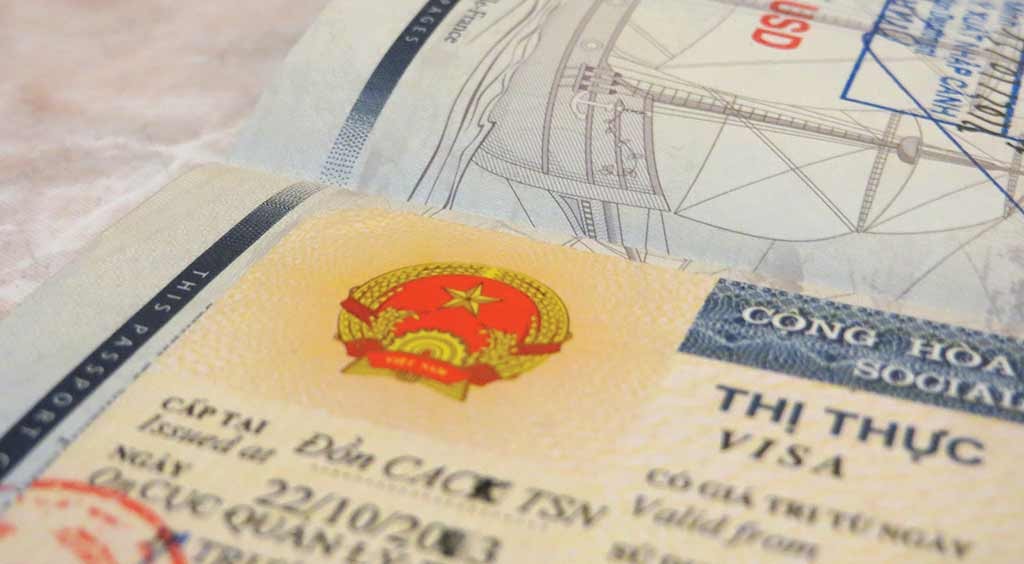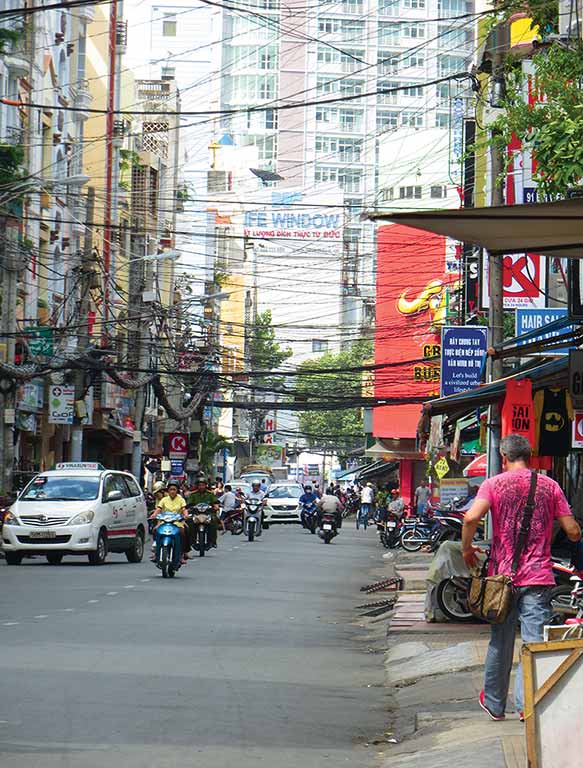Vietnam is a long, narrow country. Depending on your destination, one of three modes of transportation will serve you best: plane, train, or bus. Here are the pros and cons of each.

Vietnamese visas. Photo © Dana Filek-Gibson.
Within Vietnam, there are three main airlines with domestic routes: the national carrier Vietnam Airlines; as well as two budget ventures, Australian company Jetstar and VietJet Air. Jetstar offers the best domestic fares and service, while VietJet’s regular seat sales are a bargain, with fares as low as VND100,000. Vietnam Airlines, though more expensive, serves a much wider range of destinations, including some of the more remote airports in Vietnam and has exclusive access to certain areas, such as the remote Con Dao islands and Phu Quoc.
The cheapest way to get around in-country is by bus. Vietnam has an extensive system of roadways and dozens of tourist bus companies featuring both seated and sleeper vehicles, which run regularly along the length of the coast, from Hanoi and its surrounding areas all the way south to the Mekong Delta and into neighboring countries. Many tourists get around on buses, though certain routes—from Hue to Hanoi, for instance, or the drive up to Sapa—are more dangerous than others. In these cases, it’s better to travel via train, motorbike, or hired vehicle.

Vietnam’s city streets are quite busy. Photo © Dana Filek-Gibson.
In most major cities there is a bus station serving both nearby and long-distance destinations. Safe and reliable tickets are available through many of the more well-known travel companies, like Sinh Tourist and Phuong Trang. When booking tickets, deal with the larger, more reputable bus lines rather than smaller, cheaper companies, as the few dollars you may save on a local bus could wind up costing you time as a result of breakdowns or other troubles.
While buses are an affordable and convenient way to travel within Vietnam, theft sometimes occurs, particularly on overnight buses. Take care when traveling to keep your belongings with you at all times, either in your lap or very close to your person. Sadly, more than a few travelers have taken an overnight bus only to wake up at their destination with one or more of their possessions missing.
Excerpted from the First Edition of Moon Vietnam.